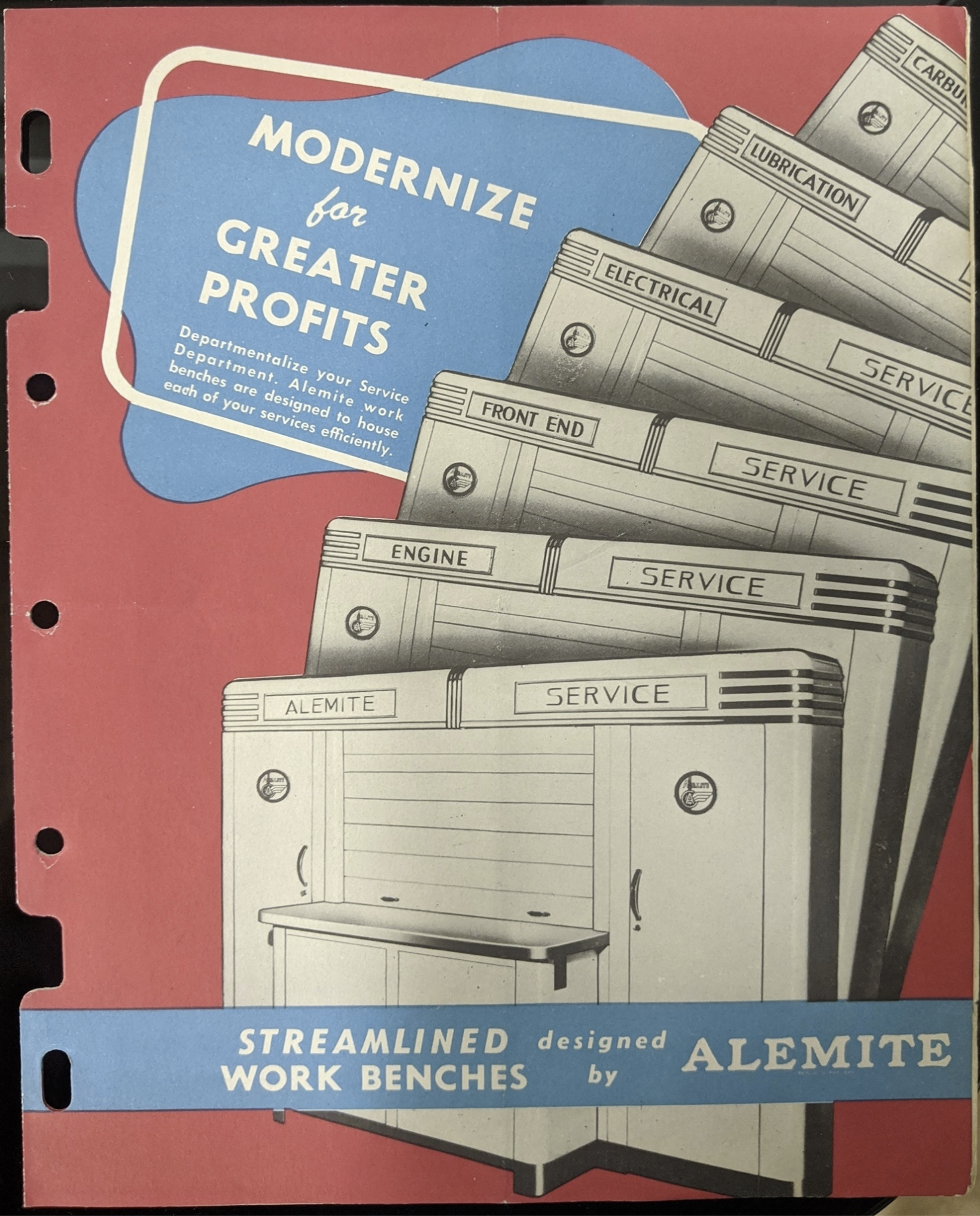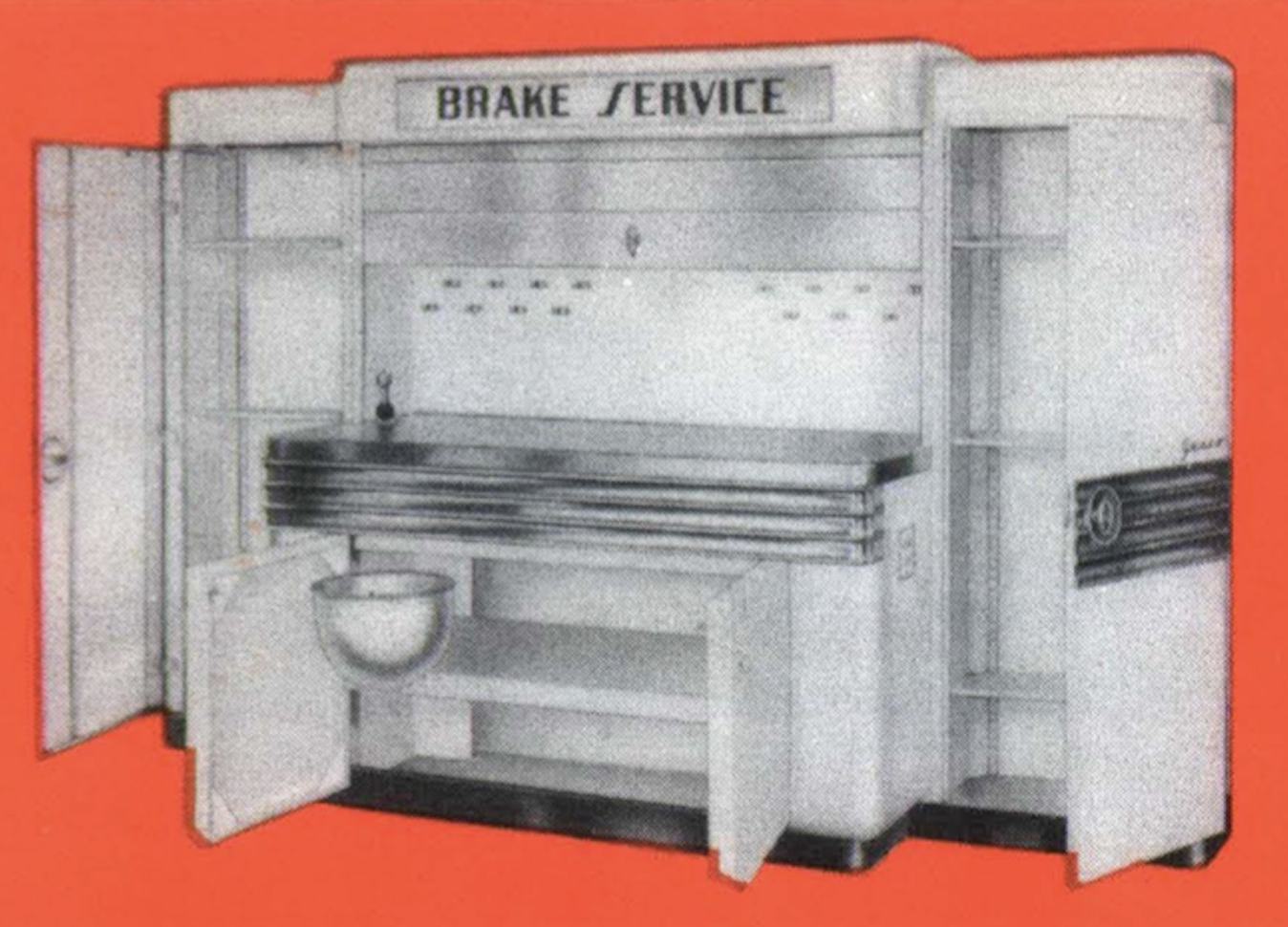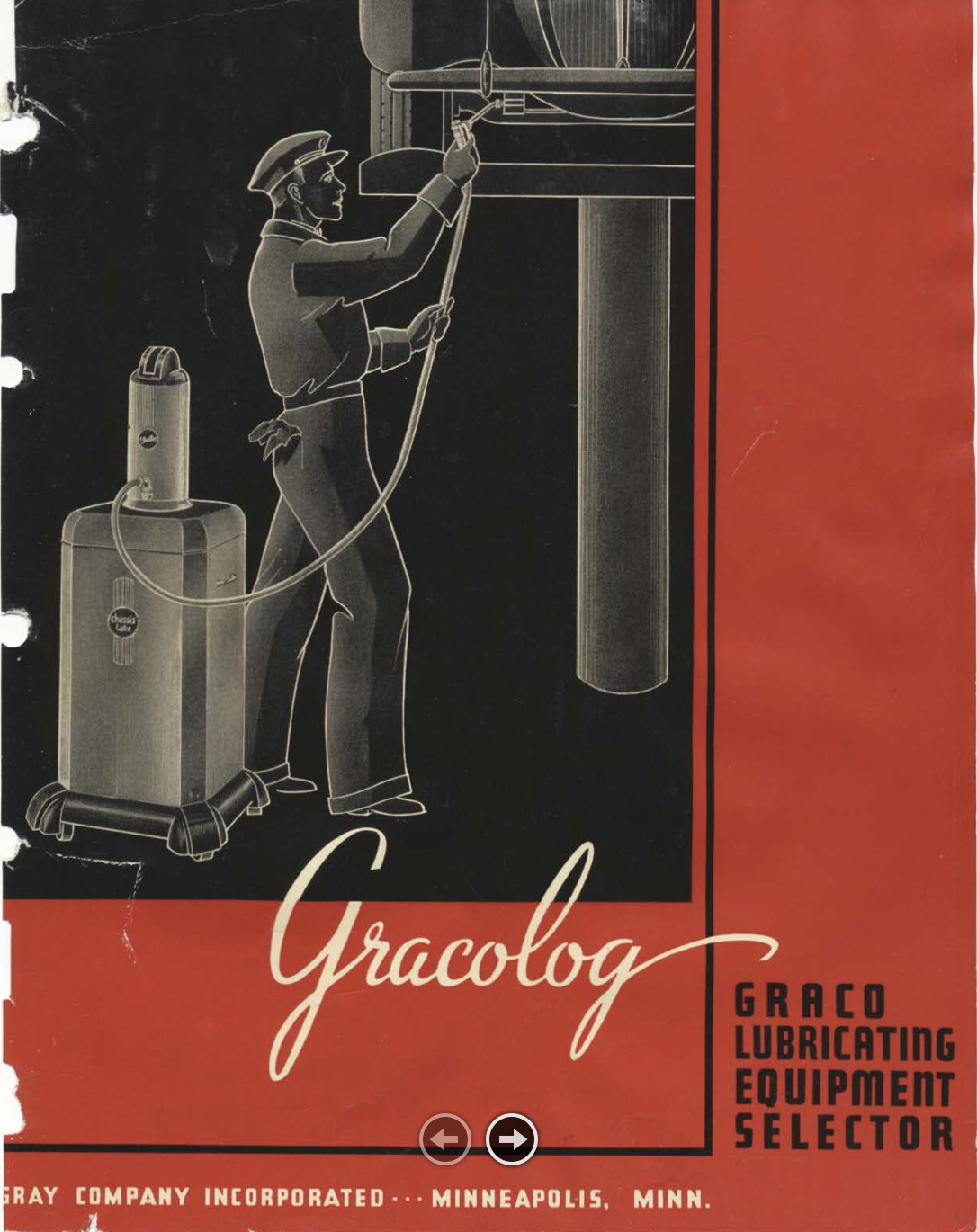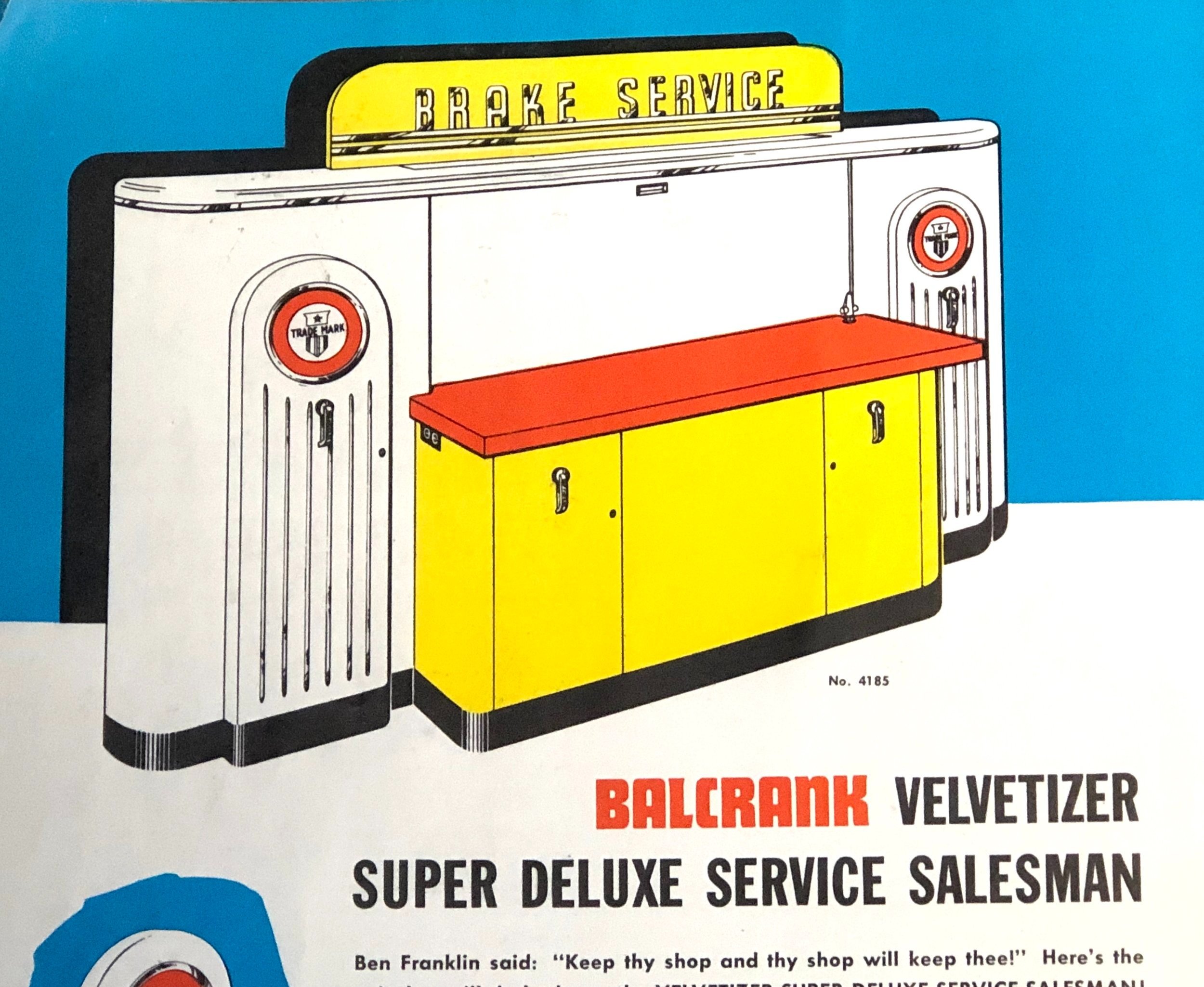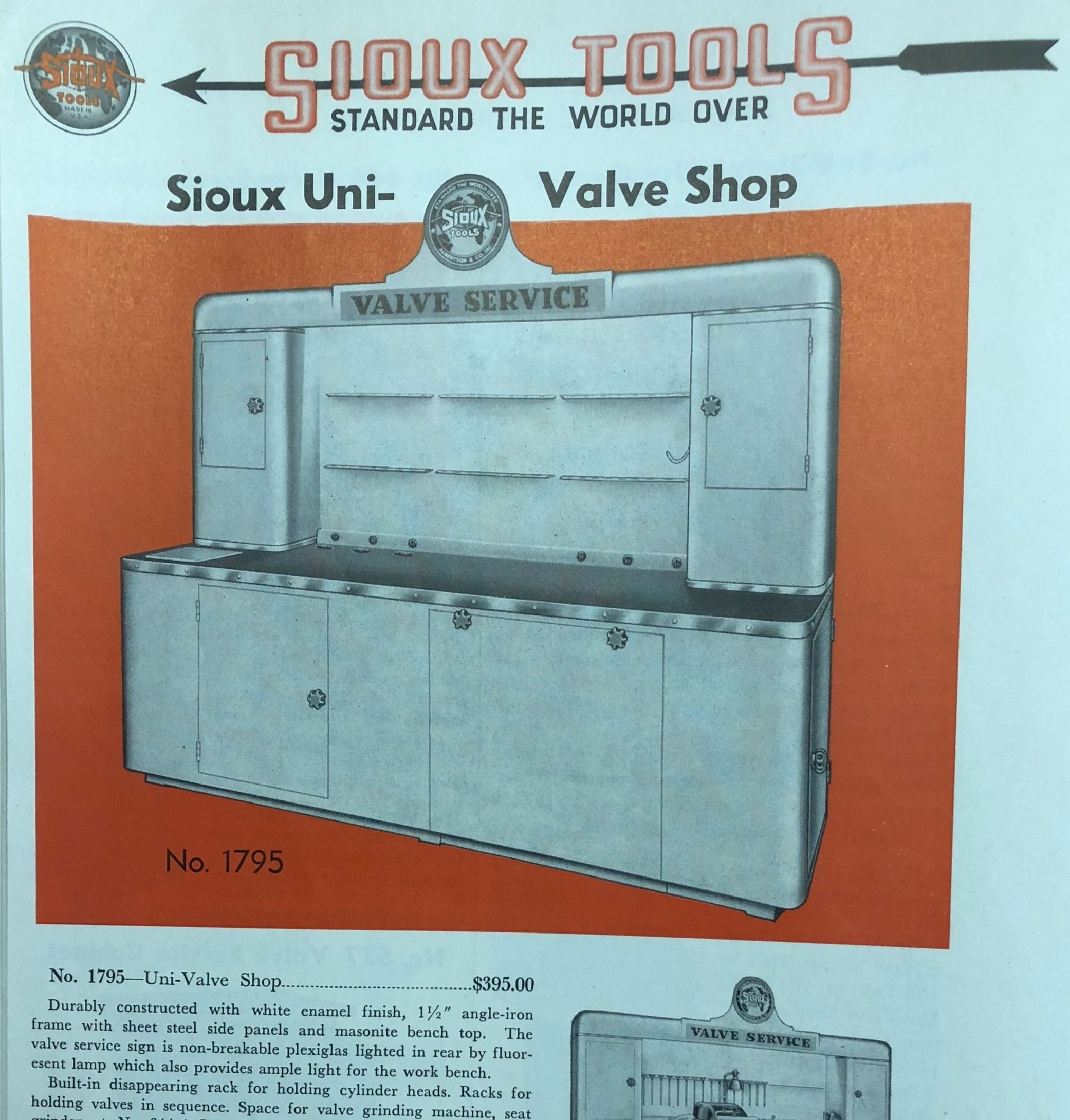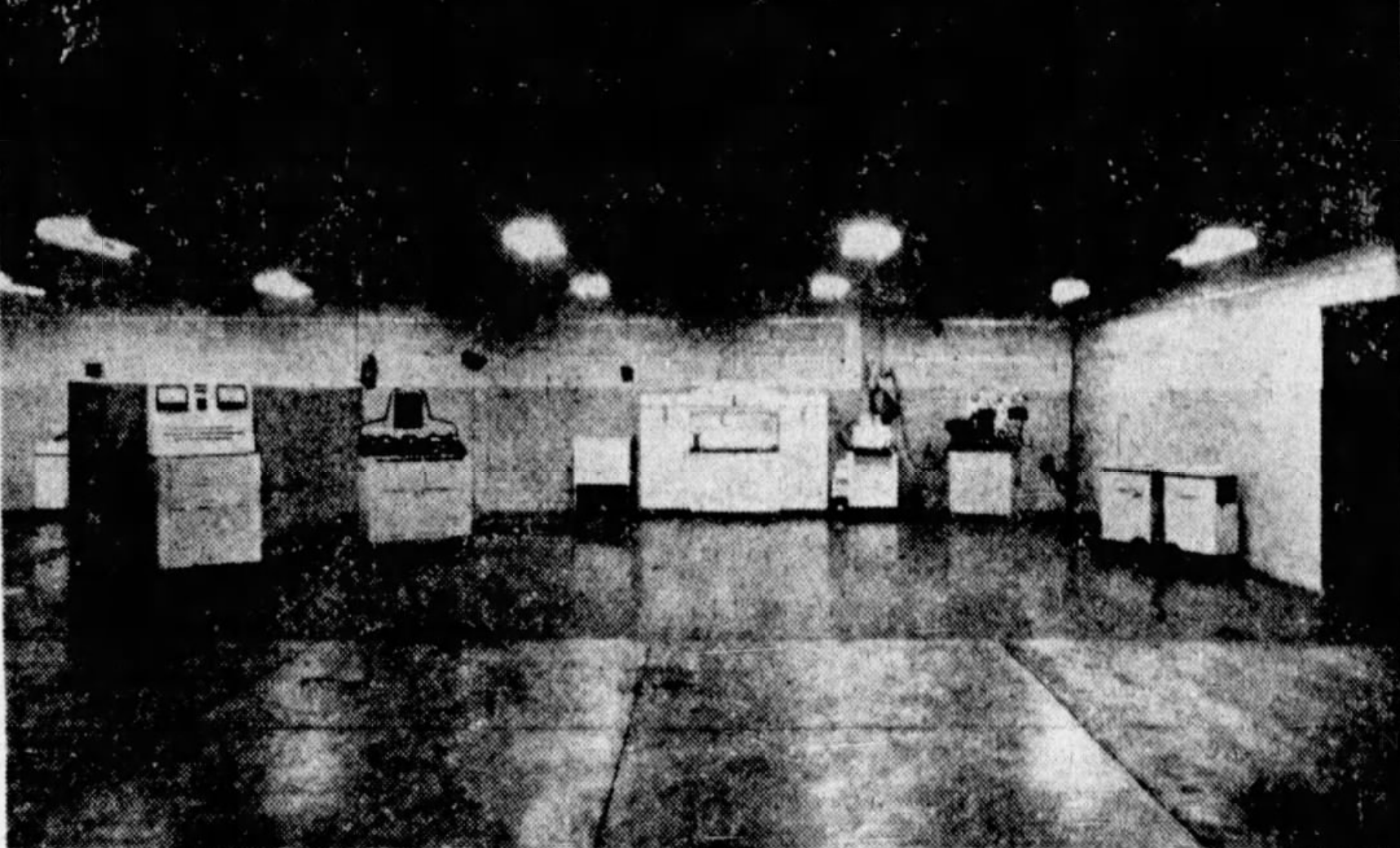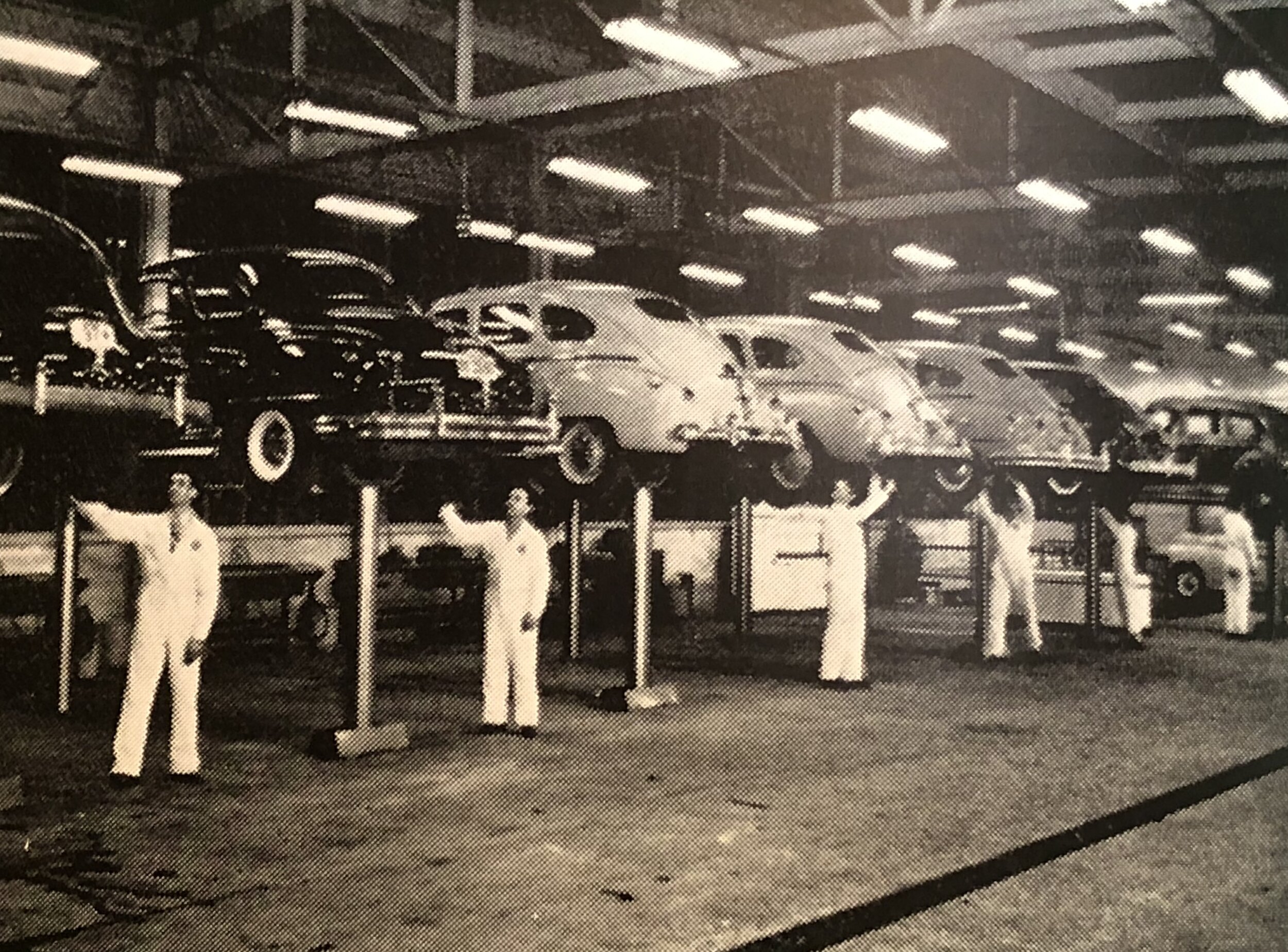Mystery Cabinets - Can you ID them?
Here are a few unknown cabinets we wanted to share. If you have thoughts as to what they are or a manufacturer, please reach out to us.
First up are these two below Lubrication Ad wall units. The left one has an Alemite next to it but the unit isn’t from their line. The right one has ARO gear but a very cool Zephyr display shelf.
I haven’t found any maker close to the look or trim on this unique red service cabinet. There is no id plate on this unit.
This 1944 image from a Vancouver Dealership has always interested us. The handles and cabinets look like kitchen equipment.
The below image is also from the same repair shop, and it appears that they repurposed other household cabenitry behind this gentleman.
We know this strange red, horizontal opening cabinet was built by Kent-Moore, but what is it used for?
This last image has some cool vertical work stations with illuminated departmental signage.
Alemite later model emblems
What years did the last sytle cabinets have these round Alemite badges on their doors vs the cutout style? As well as how many were there?
Those are questions that I do not have a solid answers for. But, below is what I have gathered about them over these years.
You can see that the two emblems have different oriented mounting studs.
Almost half of the trim-topped cabinets that I have seen, without badges, possess 4 mounting holes in their doors. This would allow the company to use either of the two emblems.
Below are what the other half of the cabinets mounting holes look like. Just two vertical ones for the cutout A badge.
This non-round A emblem is present on all lower workbenches for the whole run from 1948-55.
The Round A door badge is present in a few ads in ‘49 and ‘50, But all other ads show the other style even over these same years.
Out of nearly 400 images of these cabinets - 35% less cabinets had the round circle than the A alone. These quantities would roughly mean the round emblem cabinet was produced for 3 years, and the other cutout style for close to 5 years.
My current guess would be that the Round emblem was in use from 1948-50 and the other from 1951-55, with the 4 mounting holes lingering just past 1951.
As door badges can go missing, the round ones are more readily available, because they are on the lubers produced through all these years.
Merchandiser Catalog Front Pages
A collection of all the main Workbench manufactures catalog front/ad pages. Recently, I found this Lincoln Engineering pamphlet from 1947, of all places for sale on Etsy.
Almost all of the companies referred to their work station cabinet units as Service Merchandisers, outside of Alemite and Balcrank.
Graco Differences
Thru the years Graco made some very subtle tweaks to their Merchandisers. They are the only manufacturer to have this long of a production run and keep their Work Stations unchanged.
Here are two different ID plates; displaying the change from ‘47 to ‘48
The most common version of this bench came with lower square handles and this round bucket parts-washer.
In some of the later model Graco’s, the washing bin was a bowl shape, and the lower bench had a simple round pull knobs present.
About half of the models have an electrical plug on the back tool-board as well as the right side of the lower bench
Recently we found out that these Oil Bar benches, with the drain in them, were 4 inches less deep than the standard merchandiser benches
1950 Kent-Moore round top Workbenches
This Kent-Moore made its debut starting in Febuary of ‘50.
Built for at least three years; there was two configurations of this low style merchandiser. One with the side cabinets and another with just the rounded end caps instead.
This modular design and the one style of a right hand swing cabinet, allowed the company to offer these two models without building many extra components.
Lincoln Engineering Early Merchandisers
As early as March 1940, Lincoln started producing these deco styled workbenches.
They came with a built in front light, wall surround and a unique waterfall top marquee sign. These early door badges state Lincoln Systems.
The flip down door on the bench was for access to the parts washer bin.
Around ‘41 the company added in a left cabinet door on the front of the rounded top bench.
Sometime before ‘45, they included their straight sided desk into this model with the more standard double door access.
Shure Mfg. Workstation Differences
Here are all of the different unit model numbers and style changes for these Shure Merchandisers from 1946 thru the late 50’s… Or is it possible that these cabinets were available to buy from the company up into the 1970’s?
If the model number ended in 50, that unit had sliding lower front doors instead of swinging.
Manufacturing changes are very small on these cabinets over the years. The hinges changed from a screwed in chrome hinge to a welded on two-piece pin style. The front of the bench had a thin inlayed stainless vertical trim on some of the chrome hinge units. And the handles went from sweeped to an arch style.
This later model has full length piano hinges on the cabinet doors and plastic handles.
A friend of the website found this interesting Shure catalog, that shows these styles of Workstation available for purchase in 1971. Is it possible they were still using the original tooling, or did they have overstock available? We are waiting to hear from the Company about this new development.
All Alemite Badges through the years
Here are the Alemite Emblems used from the 1930’s til the 70’s. From pumps and cabinets.
1930’s Lubester
1930’s Alemiter
1940 - 48 The Merchandiser years 1948 - 55
and 70’s
1950’s 60’s
They really stayed with this style “A” for quite some time, from 48’ up to almost the 60’s
The Tecalemit / Alemite Connection
There was Lubrication Company that was established in Paris in 1922, that sold lubrication equipment under the name of Techla. Alemite was interested in their simple coupler clip design, and traded patents with them to get use in Europe. By the early 30's Tecalemit was in the UK and the main supplier of garage lubrication equipment.
The partnership influenced some Alemite units like this rounded lubrication island, with stripes in the late 30’s. Possibly sold by Tecalmit as well. A couple of these have been found in use up in Canada too.
The crossover continued with items like this “Handy Set” with their logo on it.
Tecalemit built a full line of Lubrication Wall Batteries, grease guns, and other service equipment. But sadly no merchandiser type cabinets.
I really do enjoy their lines, colors, and trim though.
It appears Tecalemit designs inspired other Alemite styles of the 30’s. Check out the top sign on this ‘38 Alemiter.
Service benches of unknown origin
Here are few work stations and cabinets I have been unable to identify to date. Any images spark thoughts, I would be excited to hear them.
A large service desk that says Kent-Moore to me, but I have yet to confirm.
update: Found a new image of this bench, and it is a Kent-Moore
A unique Chevrolet Motor Clinic wall cabinet? The last work station looks to have possibly been scratch-built from kitchen cabinets…
Early Alemite smaller units
Here are two examples of Alemite benches from the early 40’s.
The first is their oil bar that was built up to 1945.
The second is this model 241 Departmental WorkBench
Both of these units were found recently and it is interesting as they are both pictured together in this early Alemite ad.
Natkin & Co. Merchandisers
In the mid 40’s, “Natkin & Company” had a deal to produce workbenches for GM. Shure jumped in and helped out with there metal fabrication experience. Here are a few of these rare “N” branded Natkin cabinets in use.
Not that many of the Natkin’s were built, but their legacy lives on in the Shure’s out there. Also with their oil resistant “Nat-flex” work top surface.
The Bench below was built by Natkin and badged by them, then purchased by Bear and decals were added to the doors.
Graco "Gray Co" History
A look back; Founded in 1926 by the Gray brothers in Minnesota, Gray Company Inc.’s goal was to produce efficient and specialized automotive service lubricating equipment. It wasn’t until the late 40’s that industrial paint spraying was established.
A wonderful image of a 1938 Graco wall luber and a motor vitalizer being pulled by a Minneapolis-Moline tractor.
The Graco headquarters has a small museum showcasing some restored pieces from the early 1940’s
With help from the company, we have most of the Graco catalogs from the late 30’s through the 50’s. If you are looking for info on a specific piece, please feel free to reach out.
* All historical photos supplied by the Graco archives group
Original 40's - 50's Merchandiser Prices
Here are some of the original prices for these Work Stations over the years.
First Alemite, 1940 - $199.00
Balcrank Workbench, 1940 - $216.50
Kent-Moore Cabinet, 1940 - $135.50 in Michigan or $160.50 to Oakland, CA
ARO Merchandiser, 1948 - $265.00
Later Alemite, 1949 - $274.50
Sioux Valve Service Bench, 1949 - $395.00
Latest Kent-Moore, 1950 - $210.00
Lincoln Short Merchandiser and Cart, 1953 - $360.00
Have to love these photos of Merchandisers in use
Someone has some explaining to do for this one
But we do get to see the Alemite unit in the background









